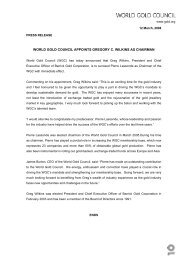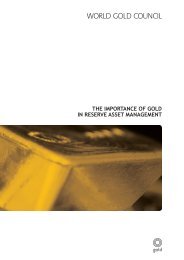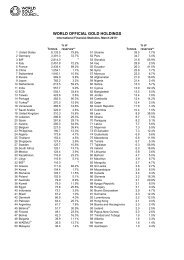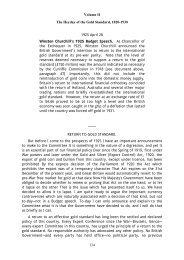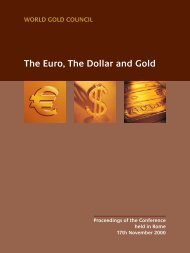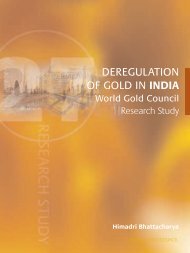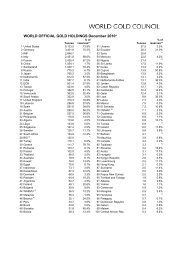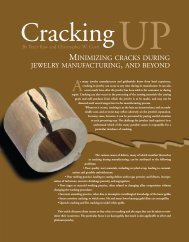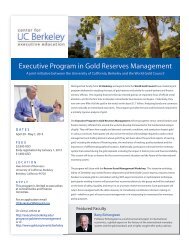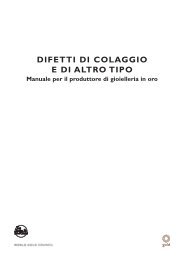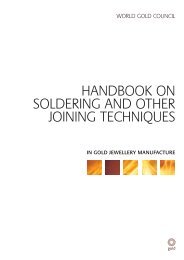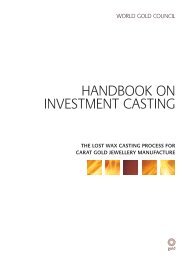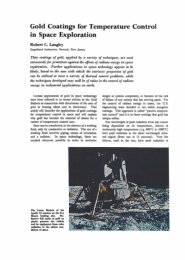Gold Derivatives: Gold Derivatives: - World Gold Council
Gold Derivatives: Gold Derivatives: - World Gold Council
Gold Derivatives: Gold Derivatives: - World Gold Council
You also want an ePaper? Increase the reach of your titles
YUMPU automatically turns print PDFs into web optimized ePapers that Google loves.
2<br />
The model as a whole has no explanatory power (the R remains negative) and none<br />
of the coefficients individually differs significantly from zero. We do however finally<br />
have a negative coefficient on the change in the hedge position. Adding the coefficients<br />
together the model suggests that a 100 tonne increase in hedging will reduce<br />
prices in time by $4.1/oz. The implication that most of the negative impact occurs<br />
the quarter after the hedging change has occurred does not seem very plausible. The<br />
standard error on the estimate is $8.0/oz suggesting we are just picking up noise.<br />
4.1.3 Direction of causation<br />
So far we have interpreted the data as if changes in hedging are exogenous; they<br />
affect the price of gold, but changes in the price of gold do not affect the level of<br />
hedging. But if changes in the price of gold can also affect the delta of producers'<br />
hedge books then this could be masking the effects we are looking for.<br />
There are at least two reasons for believing that gold prices may affect hedge<br />
books. First, if producers hold options in their hedge books the delta will change<br />
with the price of gold even if the producers do nothing to their hedge books.<br />
Second, producers may change their books as a result of a change in prices.<br />
If a producer hedges against a fall in prices by buying put options then the size of<br />
the short position will increase as the gold price falls. This will make the slope<br />
coefficient lower; it cannot explain why the coefficients are positive. The same<br />
holds if producers buy call options. The only way that options could be used to<br />
explain the positive coefficients is if producers collectively have written options.<br />
But we have seen that in aggregate producers are net buyers of options, and hence<br />
this exacerbates the puzzle rather than solves it.<br />
It is also difficult to develop a convincing argument that while hedging does lower the<br />
gold price, the effect is masked by changes in hedging policy induced by changes in<br />
the gold price. One might expect that a fall in the gold price, all other things being<br />
equal, is likely to cause an increase in hedging. Thus GFMS in its review of 1999<br />
explains the increase in hedging in the first three quarters of the year as follows: ’in the<br />
first nine months, as prices plunged through successive 20-year lows, producers desperately<br />
tried to establish some price floor and lock in some margin.’ This could<br />
explain a negative correlation between changes in the gold price and changes in the<br />
producer short position, but that is precisely what we have been unable to find.<br />
4.1.4 Conclusions<br />
We have found no evidence that changes in the size of the producer short position<br />
affect the gold price. We have considered the possibility that the effect is masked<br />
<strong>Gold</strong> <strong>Derivatives</strong>: The market impact 67



